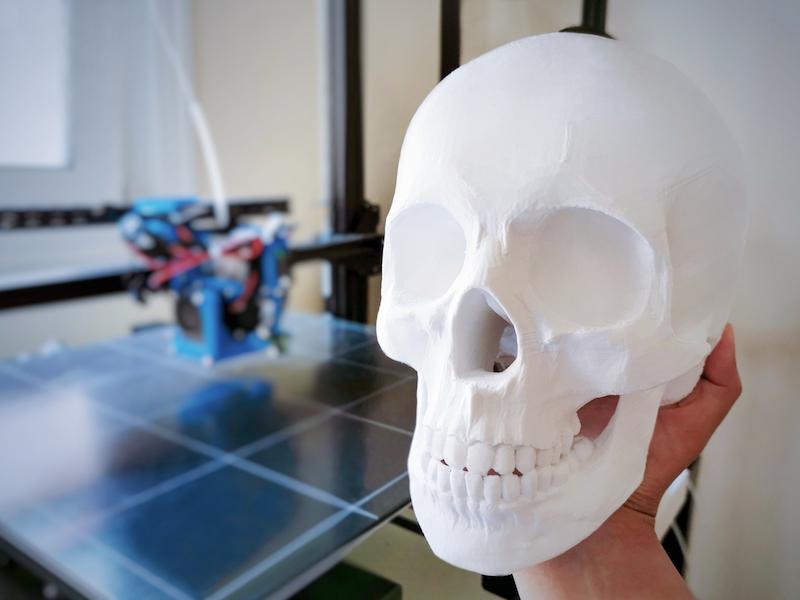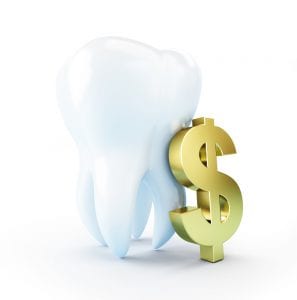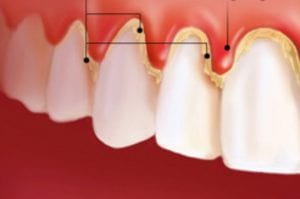The evolution of 3D printing in modern dentistry by Dr. Jaffaly | SmilePlace
introduction
Modern dentistry has witnessed incredible change over the past few decades, driven primarily by technological advancements. One of the groundbreaking innovations that entered the field is 3D printing. This revolutionary technology has revolutionized various aspects of dentistry, from diagnosis and treatment planning to the manufacture of customized dental prostheses. In this article, we will explore the impact of 3D printing in modern dentistry, highlighting its applications, benefits and future potential for further advances in dental care.

The rise of 3D printing in dentistry
3D printing, also known as additive manufacturing, involves creating 3D objects layer by layer from a digital model. This technology has found a huge number of applications in dentistry, changing the way dentists provide care.
A number of key areas where 3D printing has made a significant impact include:
1. Diagnostics and treatment planning:
3D print has improved diagnostic capabilities through the creation of highly accurate anatomical models. Dentists can now produce patient-specific models of teeth, gums and jaws for in-depth examination. These models help in the precise planning of treatments such as orthodontic procedures, dental implants and orthogenetic surgeries.
2. Dental restoration:
3D printing has revolutionized the production of dental prostheses, such as crowns, bridges, dentures and implant-supported restorations. With digital scans and computer-aided design (CAD) software, dental labs and clinics can create custom dentures that offer superior fit and aesthetics. This not only improves patient comfort, but also decreases the turnaround time of these restorations.
3. Orthodontics:
In orthodontics, clear aligners have become a popular choice for patients looking for a discreet alternative to traditional braces. 3D print plays a crucial role in the production of these straighteners. Orthodontists can create a series of aligners tailored to the patient’s teeth straightening journey, leading to more efficient and comfortable treatments.
4. Surgical guides:
For dental implant procedures, 3D printed surgical guides are invaluable. These guides ensure accurate placement of implants, reduce the risk of complications and improve overall success rates. This level of accuracy greatly benefits both patients and dentists.

The advantages of 3D printing in dentistry
The adoption of 3D printing in modern dentistry comes with many advantages:
1. Accuracy test:
3D printing allows the creation of extremely accurate dental models and prostheses. This accuracy leads to better treatment results and increased patient satisfaction.
2. Customization.
Each patient is unique, and 3D printing allows the creation of fully customized dental solutions. This not only improves patient comfort but also the aesthetics of the final restoration
3. Effective cost and working time.
Fabricating traditional dentures can be time-consuming and expensive. 3D printing optimizes the process, and reduces both the time required and the associated costs.
4. Reduced waste.
With traditional subtractive manufacturing techniques, significant material waste can occur. On the other hand, 3D technology is additive, which minimizes waste and supports environmentally friendly methods.

Specific applications of 3D printing in dentistry:
1. Dental implants and prostheses:
3D technology is widely used in the production of patient-specific dental implants and prostheses. The ability to customize the design and fit of these devices enhances their functionality and aesthetics.
Buildings, crowns, bridges, and even custom temporary prostheses can be produced with high precision using 3D printing technology.
2. Surgical splinted guides:
3D printed models assist in surgical planning for complex procedures. Surgeons can simulate surgeries and create surgical guides that ensure precise implant placement.
This reduces the margin of error during surgeries, leading to better outcomes and faster recovery times for patients.
3. Orthodontic appliances:
Clear aligners, a popular choice for orthodontic treatment, are manufactured using 3D technology. This allows the creation of a series of aligners that are customized to the patient’s unique tooth structure.
Digital models replace traditional molds, making the process more convenient for patients.
4. Anatomical models for education:
3D technology is a valuable tool in dental education. Dental students can benefit from tooth-like anatomical models for hands-on learning and practice, improving their skills before working with actual patients.
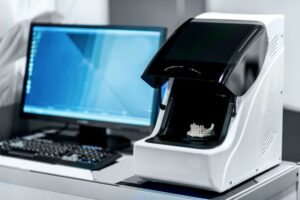
Having any questions? WhatsApp us >>> Click HERE!
The future of 3D printing in dentistry
The role of this printing method in modern dentistry is still evolving, and the future holds exciting possibilities. Some of the potential developments include:
1. Biological printing.
Researchers are exploring the use of 3D technology to create bioactive materials and even dental tissue, opening the door to regenerative dentistry.
2 improved materials.
Continued innovation in 3D printable materials will lead to even more durable and aesthetic dental prostheses, while improving the longevity of the restorations.
3 Telephone dentistry.
The combination of 3D technology and telemedicine can enable the remote production of dental devices, making access to quality dental care more convenient, especially in less accessible areas.
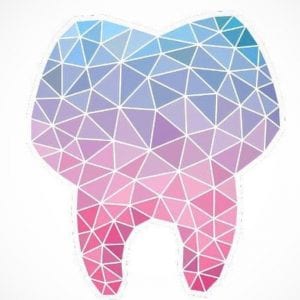
Challenges and considerations:
1. Selection of materials:
Choosing the right materials for 3D prints in dentistry is critical. The materials must be biocompatible, durable and suitable for the intended application.
2. Regulatory approval:
Regulatory bodies are adapting to the rapid advances in 3D print technology. Ensuring that 3D printed dental devices meet regulatory standards is an ongoing challenge.
3. Cost implications:
While 3Dprinting can offer cost efficiencies in some aspects, the initial investment in equipment and training can be significant. Dental practices should carefully evaluate the overall cost-effectiveness.
4. Technological progress:
Staying current with the latest 3D technologies and software is essential for dental professionals. Ongoing training and education is necessary to harness the full potential of this rapidly evolving technology.
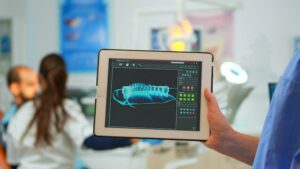
Summary
The integration of 3D printing in modern dentistry has resulted in a change in the way dental care is provided. Its applications in diagnostic, restorative and dental procedures have improved patient outcomes, reduced costs and increased the efficiency of dental care. As technology continues to advance, it holds the promise of more innovations that will ultimately benefit both dentists and patients. The future of dentistry is undoubtedly intertwined with the evolution of this type of printing.
We at Jaffaly SmilePlace dental clinic are already working with these digital methods including 3D printing. We are happy to be a leading clinic in the digital field. You are invited to come see us and be impressed by modern and up-to-date dentistry. The future is already here. We are here for you.
Call now >>> +972772177771

Please RATE US below


